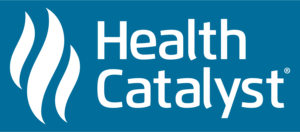
The DFW Hospital Council posts guest blogs by Associate Members. The following was provided by Health Catalyst.

Blog by Duncan Gallagher, President of Donegal Advisory Services, Health Catalyst
As a country, we are confronting many options regarding accessible and affordable health insurance. Our choices include supporting state and national insurance exchanges, eliminating the individual mandate, repealing the Affordable Care Act, advancing Medicaid block grants and creating Medicare for All.
As our communities debate the merits of these alternatives, as a nation, we must eventually confront an issue not often discussed in the mainstream: the significant challenge underlying all insurance options in an increasingly unaffordable healthcare services delivery system.
Amid these challenges, the healthcare industry is in limbo between value and volume-based payment models, as unaffordability pushes a shift to value, but the current environment still supports volume. To survive economically, health systems must understand the factors driving both payment models as well as strategies to balance value it replaces volume.
CONSISTENT RISE IN THE COST OF CARE DELIVERY
For many years, the annual cost of healthcare services has increased at a rate greater than that of general inflation. As a result, healthcare expenditures as a percent of GDP now approach 18 percent—more than doubling from 8 percent of the 1980s.
Many factors contribute to the consistent rise in cost including:
• Demographic trends;
• End of life;
• Care variation and non-standard, suboptimal care;
• Unproven technologies (pharmacological, diagnostic);
• Failure to match healthcare setting and teams;
• A care system that does not reliably share information.
With the environment described above persisting for decades, healthcare service capitalism has thrived under service payment systems incenting more care—known as fee for service (FFS). But as a designed byproduct, the FFS model drives more service, higher costs and more GDP consumption.
STEMMING THE RISING TIDE OF COST
To stem this rising tide of cost, the largest purchasers of health services, the federal and state governments, have for years constrained FFS payment increases at rates below those of other purchasers. Other large purchasers (large employers and insurers) have become increasingly frustrated with the pricing gap between fees paid by the governments and those they pay. These other purchasers are in turn demanding lower rates.
Despite these pressures, healthcare costs have continued to rise, implying more services at suppressed rates. In any event, healthcare organizations have experienced significant margin pressures despite costs continuing to rise. Alternative payment mechanisms will gradually become more attractive to providers.
Alternate payment mechanisms including value-based care (VBC) payment models have been introduced. The VBC adoption rate, however, has been slow. Provider success rates have been slower. But to effectively address the total cost challenge, a mechanism that deemphasizes care volume through alternative, outcomes-based models seems imperative.
SHIFT FROM FEE FOR SERVICE TO VALUE-BASED CARE
CMS has been a strong advocate for VBC. Since the latter 20th century, CMS changes in payment methods have driven health services payment changes.
While it’s increasingly hard to imagine VBC payments not becoming the more prevalent means of provider compensation, adoption remains slow. FFS mechanisms will not go away quickly and remain important to provider financial success. A fifth of the world’s largest economy is based on FFS models. Change of this scale takes time.
TEN STRATEGIES TO BALANCE VALUE WITH VOLUME
As healthcare makes its shift towards VBC, organizations must carefully navigate a balance of FFS and VBC payment. Ten strategies will be critical to that balance:
1. A Member Perspective: Measure market share in new members, not patients. As health systems are paid for managing populations, it becomes less productive to count patients.
2. Cautious Investment: Carefully examine investment that builds delivery capacity. Think telemedicine versus patient facilities and exam rooms.
3. Investment in Digital Infrastructure: Invest in a cloud-based analytics platform (e.g., the Health Catalyst® Data Operating System [DOS™]).
4. Innovative Digital Engagement: Leverage technology and integrate care team redesign to strengthen relationships and brand.
5. Pricing Concessions: Establish competitive pricing to position health services.
6. Aligned Incentives: Align physician, management and team compensation incentives to reward value and advance the drivers under VBC.
7. Network Management: Build an effective care system and then keep member care in the network. A care system truly providing optimal value will be well integrated in both process and information.
8. Payer-provider Trust: Build payer-provider collaboration. The resultant trust will benefit all parties and is critical to increase the adoption rate of VBC. Transparent and fair payer contracts are necessary.
9. Clinician and Administrative Alignment: Develop governance to bring clinicians and administration together to build VBC management infrastructure.
10. Physician Leadership and Accountability: Develop physician leaders. Vigorously monitor system and performance against benchmarks by reporting on outcomes and results, with a dedication to driving transformation.
While health systems can’t prudently commit wholesale to VBC, those who cling too long to FFS will risk long-term viability. Organizations must build strategies to increase their operational and financial agility and promote sustained investment in competencies critical under VBC while continuing to balance value and volume.
Health Catalyst – 10 Strategies for Navigating Volume to Value
08/11/2020